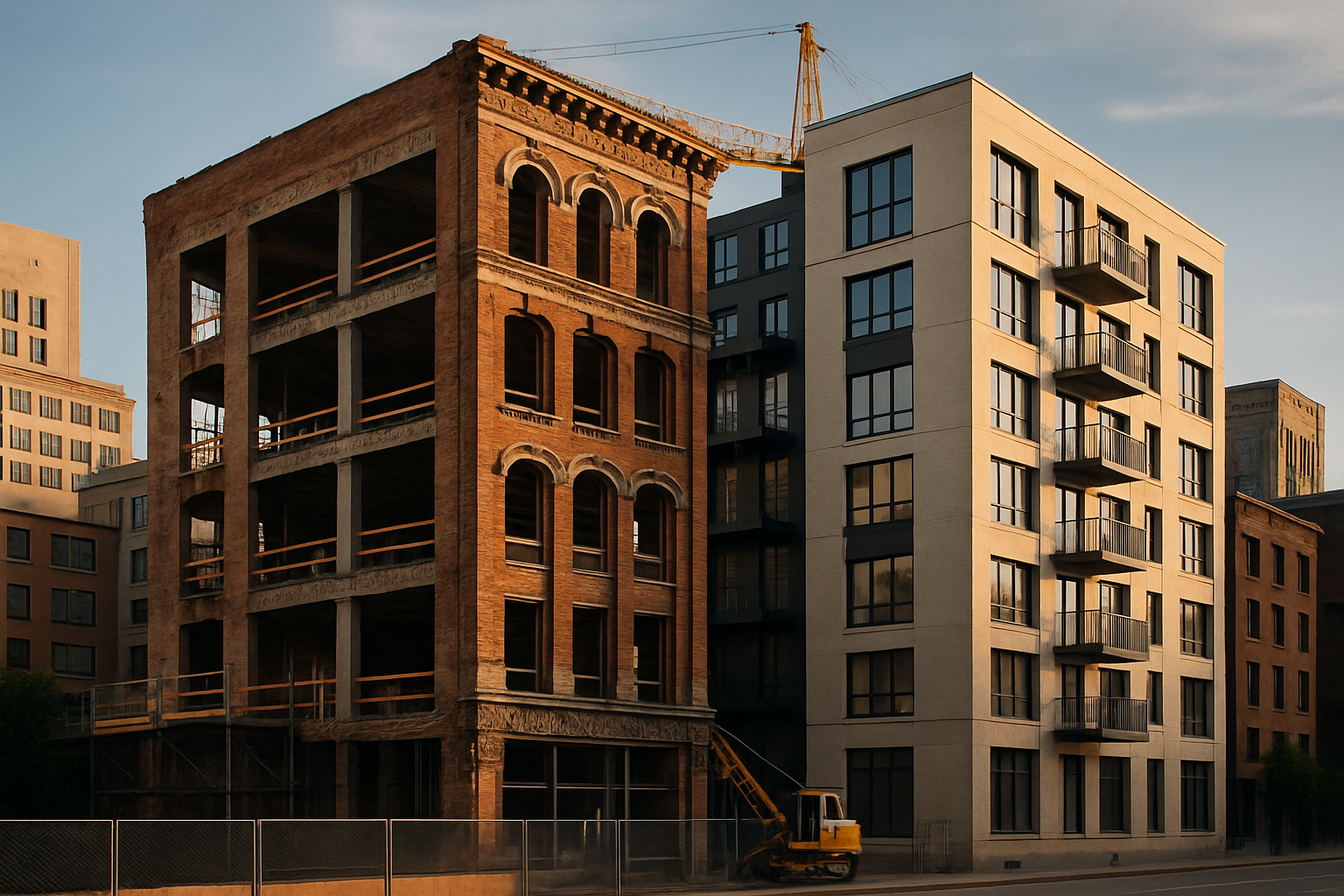Adaptive Reuse in Real Estate: Transforming Urban Landscapes
The real estate market is witnessing a fascinating shift as developers and investors turn their attention to adaptive reuse projects. This innovative approach breathes new life into abandoned or underutilized structures, transforming them into vibrant spaces that meet modern needs. With 45% of adaptive reuse projects in the US focused on converting office buildings to residential units, this trend is reshaping urban landscapes and offering unique opportunities for savvy investors.

Historical Context and Key Developments
The concept of adaptive reuse is not entirely new, but its application in real estate has evolved significantly over the past few decades. In the 1970s and 1980s, early examples of adaptive reuse focused primarily on preserving historic buildings. However, the scope has expanded considerably since then. The 2008 financial crisis led to an increase in vacant commercial properties, prompting developers to explore creative solutions. This shift laid the groundwork for the current boom in adaptive reuse projects, which now encompass a wide range of property types and uses.
Current Market Trends and Financial Insights
Recent market trends indicate a growing appetite for adaptive reuse projects among investors and developers. According to a 2022 report by the National Association of Realtors, adaptive reuse conversions increased by 40% between 2020 and 2021. This surge is driven by several factors, including the changing nature of work, shifting demographics, and a growing emphasis on sustainability in real estate development.
Advantages of Adaptive Reuse Projects
One of the primary advantages of adaptive reuse is its potential for cost savings. Renovating an existing structure can be up to 16% cheaper than new construction, according to a study by the Urban Land Institute. Additionally, these projects often benefit from tax incentives and grants designed to encourage the preservation of historic buildings. From an environmental perspective, adaptive reuse significantly reduces construction waste and energy consumption associated with new builds, aligning with growing demands for sustainable development practices.
Challenges and Considerations
While adaptive reuse offers numerous benefits, it also presents unique challenges. Developers must navigate complex zoning regulations, building codes, and preservation requirements, which can vary significantly depending on the location and nature of the project. Structural issues, hazardous materials, and unforeseen complications can also arise when working with older buildings, potentially leading to increased costs and project delays. Careful due diligence and thorough feasibility studies are crucial to mitigate these risks.
Impact on Urban Revitalization
Adaptive reuse projects play a vital role in urban revitalization efforts. By repurposing vacant or underutilized buildings, these developments can breathe new life into struggling neighborhoods, attract new residents and businesses, and preserve the unique character of urban areas. A prime example is the transformation of Detroit’s abandoned Michigan Central Station into a mixed-use innovation hub, which is expected to create thousands of jobs and spur economic growth in the surrounding area.
Investment Opportunities in Adaptive Reuse
For real estate investors, adaptive reuse projects offer unique opportunities to capitalize on undervalued properties and create distinctive assets with strong market appeal. These projects often result in one-of-a-kind spaces that command premium rents and attract high-quality tenants. However, success in this niche requires a deep understanding of local market dynamics, strong relationships with local authorities, and the ability to navigate complex renovation processes.
Future Outlook and Emerging Trends
As cities continue to evolve and adapt to changing demographics and work patterns, the demand for innovative adaptive reuse projects is likely to grow. Emerging trends include the conversion of shopping malls into mixed-use communities, the transformation of parking garages into vertical farms or residential spaces, and the repurposing of office buildings into educational facilities or healthcare centers. These trends reflect a broader shift towards more flexible, sustainable, and community-oriented urban environments.
Conclusion
Adaptive reuse represents a compelling opportunity for real estate investors and developers to create value, promote sustainability, and contribute to urban revitalization. While challenges exist, the potential rewards – both financial and societal – make this an increasingly attractive strategy in the ever-evolving real estate landscape. As cities continue to grapple with changing needs and limited space, adaptive reuse will likely play an even more significant role in shaping the urban environments of the future.





